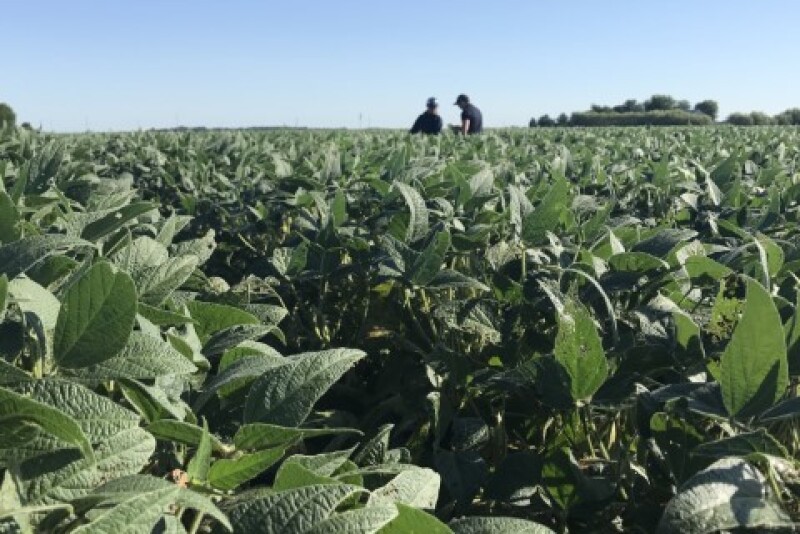Day 2 was our shortest day for scouting on the week. The morning started out very wet and warm again, and the afternoon was again in the lower 90’s for highs. We started the day in Grand Island and worked our way Southeast, ending the day in Nebraska City, encompassing crop districts 5, 6, 8 and 9. My particular route moves East out of Grand Island and turns South at York.My samples all came out of crop districts 6 and 9.
Our 5 corn samples in District 6 averaged 188 BPA.The range was a high of 231 and a low of 145. Our 2024 District 6 average was 177 BPA. We pulled 13 corn samples in District 9 with an average of 173 BPA.We had a high yield of 203 BPA and a low yield of 147 BPA. Our 2024 District 9 average was 164 BPA. The corn crop was very healthy until the end of our day in the counties of Johnson and Nemaha. Our last 5 samples came from these two counties and Southern Rust was very prevalent in these 5 samples. The corn was in full dent and some fields even had ears that had dropped and the husks had turned brown. The Rust was mostly on leaves below the ear but the plants were certainly shutting down a little early. There was some silage being cut in District 9 but we weren’t able to find out any yield results.
On the soybean side we also pulled 18 samples with 5 coming from District 6 and 13 from District 9. The District 6 samples averaged 1114 pods in a 3x3 square. Our high was 1470 pods and our low was 908 pods. Our 13 samples pulled in District 9 averaged 1263 pods in a 3x3 square with a low of 720 pods and a high of 1776 pods. Our 2025 pod counts came in at 15% above the 2024 pod counts for the same Districts. The 2024 soybean crop had a rough finish as the weather turned really dry after Crop Tour week and the soybeans yields did not live up to their potential. The 2025 soybeans certainly have a lot of potential yet, but Southeast Nebraska is going to need more rain to fill out this crop and prevent this crop from becoming disappointing like last year. East Central and Northeast Nebraska are in better shape in soil moisture are closer to finishing with their current potential. Soybean diseases really became worse as we moved out of District 6 and into District 9.Sudden Death, Gall Midge, and Brown Stem Rot were all evident in most of the samples we pulled in Disrtrict 9. If the weather stays dry these factors could also put a strain on how this soybean crop finishes.
Tomorrow we move into Western Iowa, scouting the counties mainly West of I-35 from The southern border north to Minnesota, ending the day of sampling in Spencer. It will be interesting to see how the Rust in the corn is and if the soybean diseases we encountered today are a problem for the Iowa crops we scout tomorrow.

